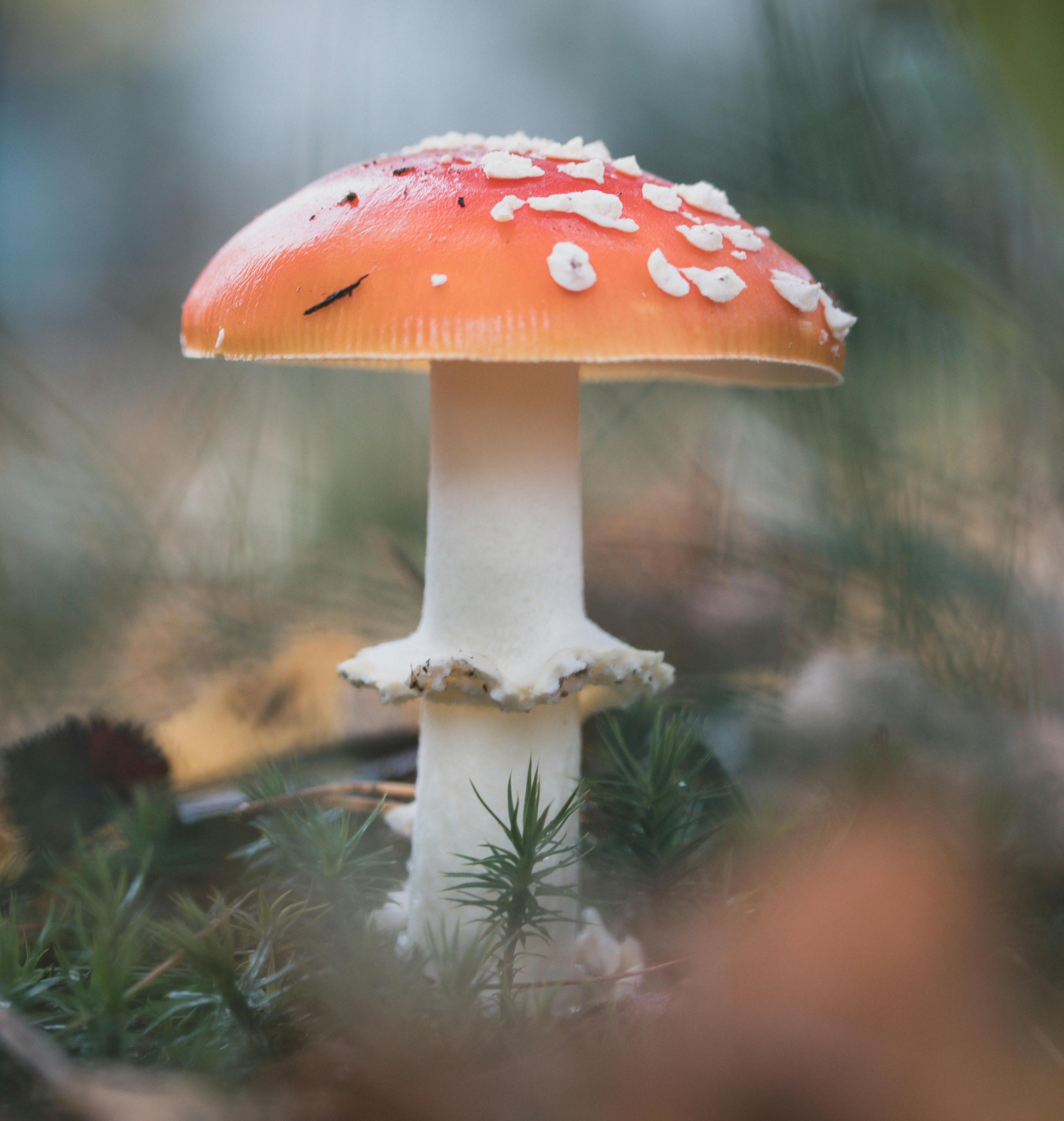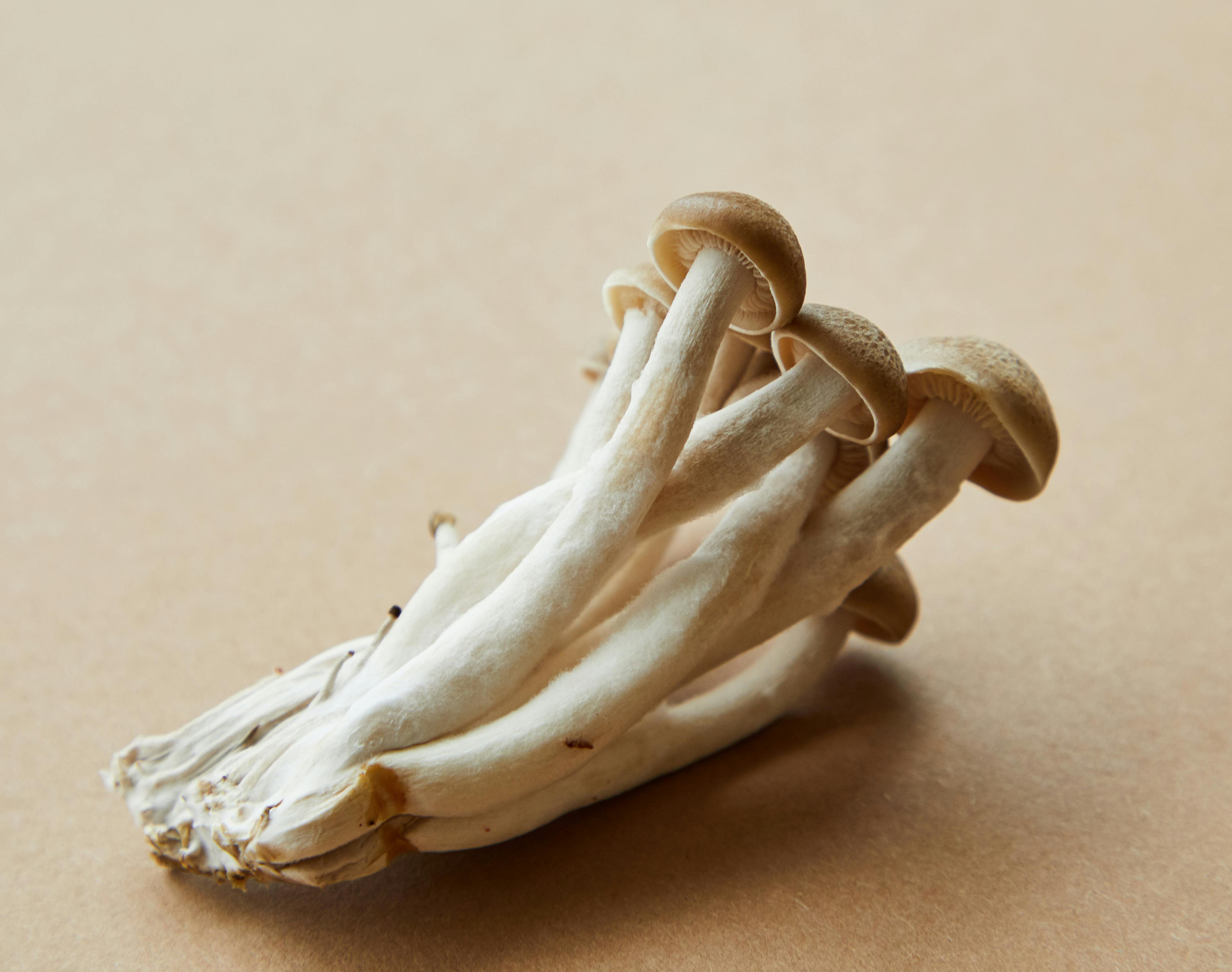Posted by Wild Forest Herbs on Apr 8th 2024
Amanita Muscaria vs. Psilocybin (Magic Mushrooms): What’s the Difference?
At Wild Forest Herbs, it’s not uncommon for us to get questions from customers who are not sure about the difference between Amanita muscaria and psilocybin mushrooms (aka “magic mushrooms"). So what’s the difference between them? This blog will cover the similarities and differences in the mushrooms’ compounds, effects, legalities, appearance, and cultivation.
Effects of Amanita Muscaria vs. Magic Mushrooms
Amanita muscaria and psilocybin are two very different mushrooms with distinct effects on the human body and mind. If we had to sum it up, we’d say that Amantia muscaria creates a more dreamy, relaxed experience while psilocybins are more intense and hallucinogenic. However, it’s hard to pin down the exact effects of each mushroom as they can vary quite a lot depending on the individual and the dosage. Read on to learn more.
Psychoactive vs. Psychedelic
Amanita muscaria is generally considered a “psychoactive” mushroom while psilocybin mushrooms are both “psychoactive” and “psychedelic.” Psychoactive substances are generally defined as any substance that impacts brain function, whereas psychedelic substances result in more visual and auditory distortions as well as hallucinations. Whether something is considered psychedelic and not just psychoactive can be a matter of degree. And when it comes to mushrooms, things aren’t always that clear-cut. For example, coffee is a psychoactive substance but Amanita muscaria clearly has a greater impact on the brain than coffee. Literature on Amanita muscaria often states it results in “delirium” rather than true “hallucinations,” which is the primary reason it’s not considered a psychedelic. However, many people have reported experiencing hallucinations at higher doses of Amanita muscaria. In general, however, Amanita muscaria is milder and has more anti-anxiety, calming and tranquilizing effects (and is often used for insomnia) while psilocybin mushrooms are far more intense and energizing.
Psychoactive Compounds
The primary psychoactive compounds are completely different for the two different types of mushrooms. In Amanita muscaria the key psychoactive compounds are muscimol and ibotenic acid. Amanita muscaria activates the brain’s GABA receptors, amplifying the calming signals in the brain and increasing creativity. With psilocybins, the primary psychoactive compounds are psilocybin and psilocin, which increase the amount of serotonin released in the brain. Serotonin regulates mood and sleep, but it’s not necessarily calming, and at higher levels can result in nervousness and insomnia, which is part of what makes psilocybins both more intense and more stimulating than Amanita muscaria.
Effects
- Amanita muscaria. The effects of Amanita muscaria can vary widely depending on dosage, individual tolerance, and environment. Amanita muscaria generally creates a relaxing, ethereal, hypnotic, dreamy and euphoric state. At low doses, Amanita muscaria creates a sense of calm and tranquility and at nighttime, it is often used to fall into a deep sleep with incredible, vivid dreams. For some people, the effects of the mushroom don’t take effect until they enter a half-sleep, half-dream state. At higher doses, Amanita muscaria can cause hallucinations (often described as dream-like or surreal), distortion of perception, altered sense of time, changes in sensory experiences such as vision and hearing and an altered state of consciousness. At high doses time can become distorted and appear to move in a loop (“time loops,” which are not always pleasant). The effects of Amanita muscaria also vary depending on whether the dried mushrooms are “decarbed” (a process which converts the ibotenic acid compound into muscimol) before ingesting them. Muscimol is a sedative that creates calm and relaxation while ibotenic acid is more stimulating and energizing—but ibotenic acid can also lead to nausea, vomiting and agitation in larger amounts. Regardless, Amanita muscaria is typically more mild and relaxed than psilocybin and researchers are experimenting with using it to treat depression, trauma, PTSD and insomnia. Amanita muscaria is also being explored for potential therapeutic benefits such as the mushroom’s ability to help with introspection, create profound psychological insights and help people calmly face unresolved issues or trauma.
- Psilocybin is a psychedelic mushroom that increases the serotonin released in the brain, affecting perception, mood and more. It can result in intense alterations in perception, changes in mood, heightened sensory experiences, and profound alterations in consciousness. The experience varies greatly by dosage, from colors appearing brighter than normal to intense visual distortions such as halos and tracers, to kaleidoscope patterns, to out-of-body experiences and disappearance of ego. People often report visual and auditory hallucinations, introspective experiences, feelings of interconnectedness, euphoria, and enhanced creativity. Time can become distorted and seem to move much more slowly. Creativity can increase. Psilocybin can shift the perception of visuals, sound, space and time—and hallucinations that can be quite intense at high doses. When things go wrong, psilocybins can also create confusion, fear, panic, agitation, destructive thought patterns and even temporary psychosis. Like Amanita muscaria, therapists are exploring psilocybin mushroom’s potential for treating things ranging from depression and trauma to OCD and addiction treatment.
In summary, Amanita muscaria can create more of a tranquil, dream-like, ethereal state—while psilocybins can create more intense and vivid experiences with more active hallucinations.
Duration
- The effects of Amanita muscaria typically begin 30 to 90 minutes after ingestion and last for several hours, with the peak effects occurring within two to three hours after ingestion. The duration and intensity of effects can vary depending on factors such as dosage and individual metabolism.
- Similar to Amanita Muscaria, psilocybin’s psychedelic effects start 30 to 60 minutes after ingestion, peak at around two hours and last for about six hours. The tail effect of psilocybin mushrooms sometimes lasts several hours more and can make sleeping difficult.
Precautions
Reactions to mushrooms can vary greatly depending on the individual, their circumstances and mental state, and the mushroom dosage. It’s always recommended to approach psychoactive mushrooms with extreme caution. With both Amanita muscaria and psilocybin mushrooms, dosage can be difficult to determine as the quantity of active compounds can vary greatly from mushroom to mushroom.
Consuming large quantities of either mushroom can result in nausea, vomiting, muscle weakness and lack of coordination—though this is more likely with Amanita muscaria. Amanita muscaria can also result in blurred vision, salivation, and diarrhea—and in very rare instances (almost all involving children accidentally eating raw amanitas) seizures. In terms of precautions, large doses of Amanita muscaria are more likely to lead to negative physical side effects, while large doses of psilocybin mushrooms are more likely to have negative psychological effects such as anxiety, paranoia, panic attacks and even temporary psychosis.
Legalities
In the United States, Amanita muscaria are unregulated by the federal government. At a state level, they are only regulated in Louisianna, where they are illegal. This means that while Amanita muscaria are not approved for human consumption by the US Food and Drug Administration, it is legal under federal law and in 49 states to collect, buy, sell and consume them.
By contrast, psilocybin mushrooms are illegal under federal law, and while a few states allow people to grow, possess or ingest the mushrooms, they are not legal to buy or sell anywhere in the United States. This has not prevented some sellers from selling the mushrooms or selling products with psilocybin, but buyers should be aware that neither federal nor state laws allow this.
Appearance, Habitat and Cultivation

 In terms of appearance, Amanita muscaria and psilocybin
mushrooms could hardly be more different. Amantia muscaria are the iconic,
white-spotted, bright red mushroom from fairy tales, Santa Claus, and Alice in
Wonderland. Their caps can be as small as an inch across or can grow almost a
foot across (the size of a dinner plate!). Amanita muscaria grow around the world but are mostly found in conifer forests in the Norther Hemisphere. While
Amanita muscaria are much easier to properly identify in the wild, they have so
far proven to be impossible to cultivate because they have a mycorrhizal
relationship with certain confiner trees so can’t be grown commercially.
In terms of appearance, Amanita muscaria and psilocybin
mushrooms could hardly be more different. Amantia muscaria are the iconic,
white-spotted, bright red mushroom from fairy tales, Santa Claus, and Alice in
Wonderland. Their caps can be as small as an inch across or can grow almost a
foot across (the size of a dinner plate!). Amanita muscaria grow around the world but are mostly found in conifer forests in the Norther Hemisphere. While
Amanita muscaria are much easier to properly identify in the wild, they have so
far proven to be impossible to cultivate because they have a mycorrhizal
relationship with certain confiner trees so can’t be grown commercially.
Psilocybin mushrooms (of which there are many types) are small, generally tan-colored, and can have whitish or light brown stems that sometimes have a blue tone. These mushrooms can be difficult to distinguish from the thousands of other “little brown mushrooms” that dot the globe. They grow across the planet and can live in almost any climate. They like rich soil and are notorious for growing not only around decaying wood, but also near or in cow dung. They are difficult to properly identify, and because many look-alike mushrooms can be toxic, those without a background in mycology should not try to pick psilocybin mushrooms in the wild. Unlike Amanitas, psilocybin mushrooms can be recreationally grown in many different conditions (such as basements!) given proper soil, moisture and temperature.
Summary
In summary, while both Amanita muscaria and psilocybin produce are mind-altering mushrooms, they differ in terms of their legality, psychoactive compounds, effects, toxicity, appearance and habitat.
PLEASE NOTE: Wild Forest Herbs believes in sharing the growing scientific understanding of Amanita muscaria. However, our blogs are for educational and scientific study purposes only and nothing in these blogs should be taken as endorsing or recommending eating or ingesting Amanita muscaria. The Federal Food and Drug administration has not approved Amanita muscaria for human consumption.

